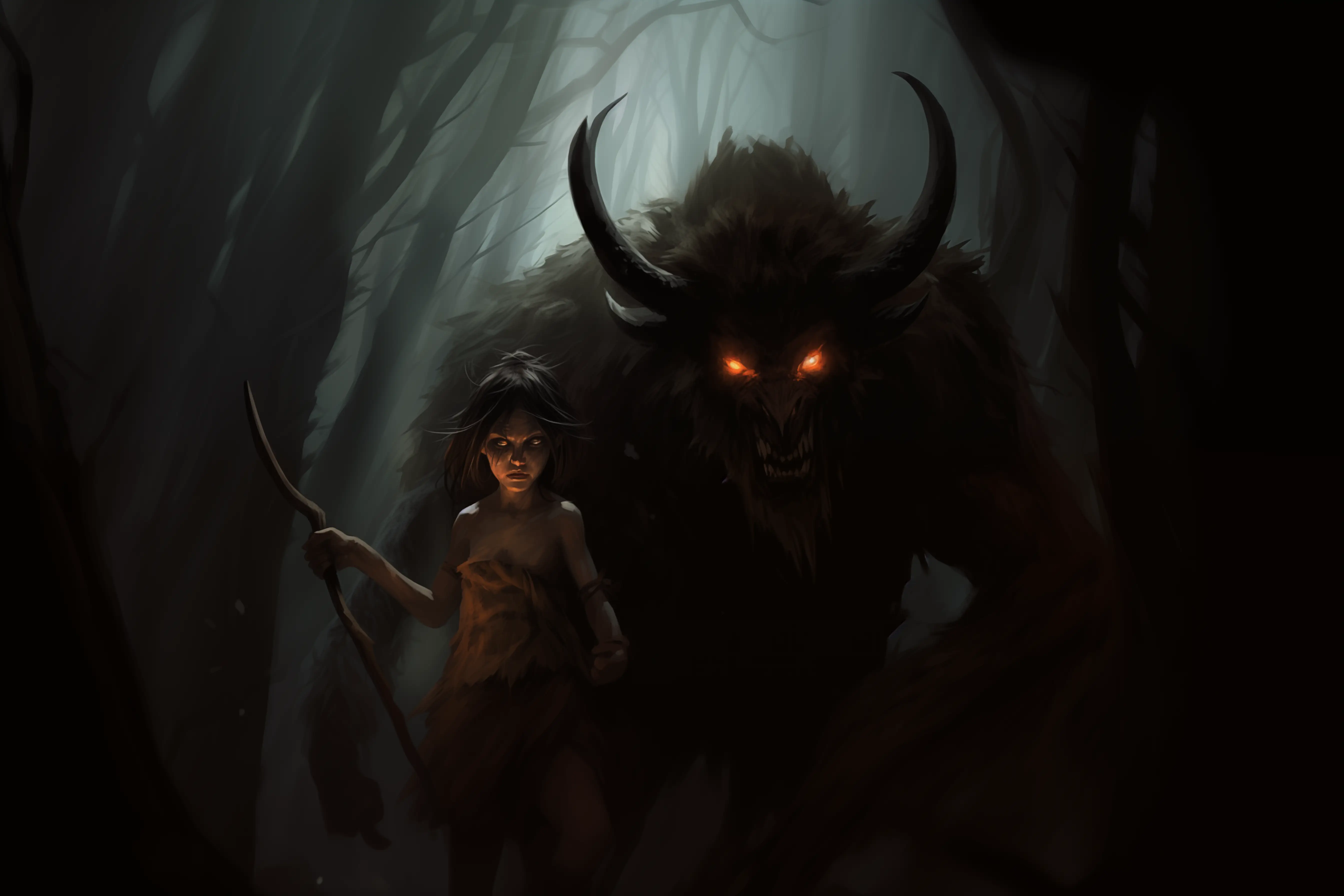Feyn
Overview:
The Feyn (pronounced "Feyin," with a short, clipped "i," almost indistinguishable from "Feign"), also known as the "Nightfolk" amongst the Duvik, are beings whose origins and nature are subjects of both scholarly debate and widespread superstition. Believed to be ancient spirits, the Feyn are said to have found a way to manifest physically in Alterran, known as the "Second World." Their presence is deeply woven into the fabric of this world, and some believe they predate recorded history. The Feyn are often thought to operate beyond human understanding, appearing at moments of profound significance, particularly near the threshold of death.
Origins and Nature:
Scholars from Rostova and Sevgorod have different interpretations of the Feyn’s origins and nature. The Rostovan Guilds often argue that the Feyn were originally spirits in the mythic World of the First People, the place that the Essil arrived from, haunting places of psychological intensity or abandonment. Over time, they discovered how to weave corporeal forms in the Second World, allowing them to interact with the physical realm. These bodies are said to regenerate incredibly rapidly, especially in the presence of blood, moonlight, or human souls transformed into scripture through Chatillian rituals. It is said they are susceptable to fire and silver, and there is ample evidence there's some truth to the claim.
Sevgorod scholars, however, tend to emphasize the Feyn’s vampiric and ultimately corrupting nature. They describe the Feyn as beings unable to generate their own life force, instead feeding on the energies of others—be it blood, moonlight, or experiences. Sevgorod accounts also stress the Feyn’s vulnerability to physical destruction in the Second World, where, unlike humans, their spirits cannot be recycled. Many of their manuals detail methods that they might be combated and ultimately destroyed, although it is notable that none of these scholars have ever faced a Chatillian, aside from Archibald the Unfortunate. His fate need not be entered here.
Types of Feyn:
Scholars and folklorists have identified three primary types of "embodied" Feyn, each embodying different aspects of the Land of the Dead:
- Chatillians: These Feyn are associated with the end of life, often described as contemplative and introspective. They are believed to "guide" souls in exchange for memories and are considered master shape-shifters, though most are reclusive and avoid human contact. They transcribe and at times consume the memories of mortal-kind.
- Meliae: The Meliae are said to embody the seductive, captivating forces of nature, often appearing as beautiful human females. They are however in fact neither of these things, and most manuals insist that they will inevitably steal or possibly eat human children, or that human babies are integral to Feyn reproduction. Other legends suggest they sprout asexually from pods under a full moon. Whatever the truth of these matters, their influence over emotions and nature is well-documented in both scholarly texts and local myths.
- Tovag: The Tovag are seen as fierce warriors. Most scholars portray them as more monstrous and brutal, emphasizing their bestial nature, although there is some accounting of their role as guardian of the borders between life and death.
- Karlu-Chatil: Known both perjoratively and sometimes by choice as "goblins," the Karlu-Chatil are hybrids born of unions between Feyn and humans. Rostovan scholars often view them more sympathetically as tragic figures, caught between two worlds, doomed to fail them both. Sevgorod perspectives, however, are less sympathetic, viewing the Karlu-Chatil with suspicion and focusing on their potential to disrupt both human and Feyn societies with their influence. Their manuals frequently detail how to find children that might have the dreaded "Seven Signs of Abomination." Confusingly, Karlu-Chatil are sometimes called Changelings in local folklore, however Melaie are often referred to similarly.
Genetic Descendants




Comments